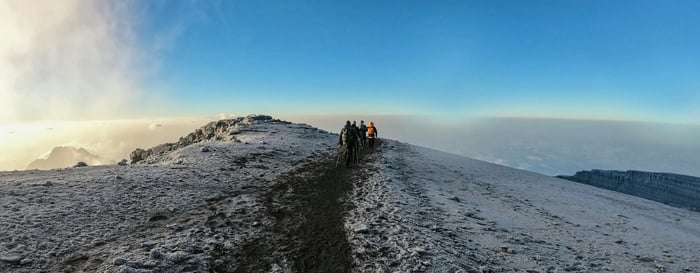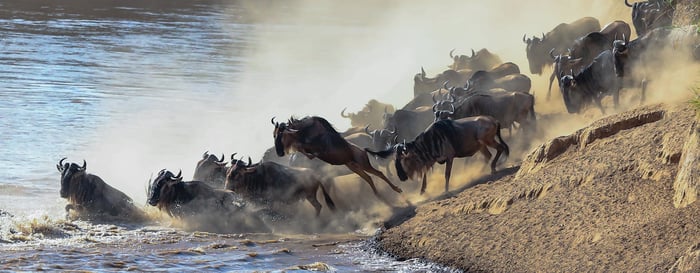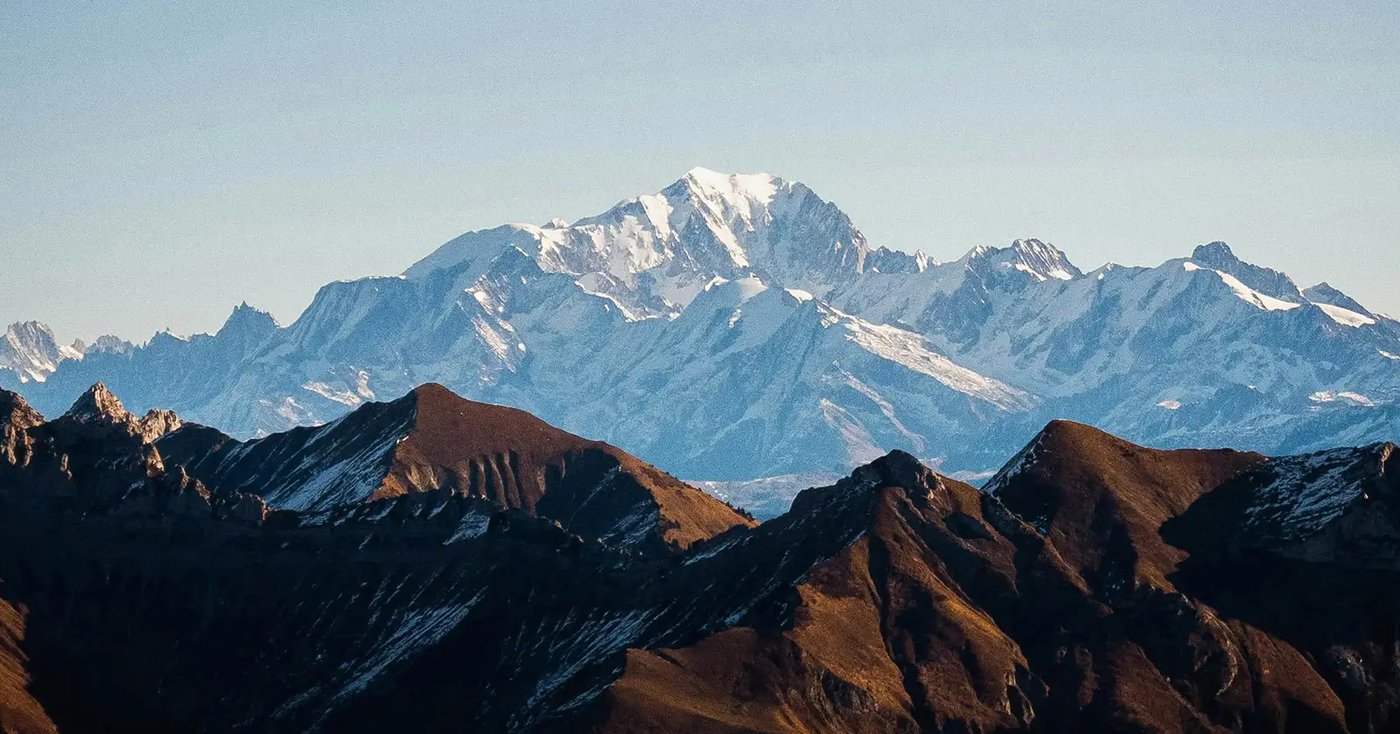You’re not, I thought peering through the windscreen, going to drive along that! We had just crossed the Zoji La pass and the rough road ahead forked. Both arms navigated a giant unstable-looking slope of grey stones and scree. But my driver showed little signs of slowing as we sped down into the V-shaped notch towards the yawning valley beyond.
Of all India’s road journeys, few match the thrilling drive from Leh to Srinagar. Nearly 12,000 feet above sea level, Leh is the capital of Ladakh, India’s so-called ‘Little Tibet’ – a high-altitude desert of rugged valleys, time-forgotten villages and spectacular Buddhist monasteries. While Srinagar, with its celebrated houseboats and lakes, lies in the fabled Vale of Kashmir. This stunning 422km-long road that lies between them bridges not just different cultures, but extremes of geography and terrain.
Bordering Tibet and Pakistan, Ladakh is among India’s most otherworldly destinations. I’d spent a week exploring its ancient hilltop monasteries and walking through tranquil villages where yaks still plough fields of millet. From atop the former royal palace I’d gazed down at Old Leh’s warren of lanes and alleys, where Buddhist Ladakhis, Muslim Kashmiris, Indian Army and tourists rubbed shoulders in the bustling bazaars.
Just two roads link Leh with the rest of India: one heads south to Keylong and Manali in Himachal Pradesh while the other – ‘National Highway 1’ as it’s formally known – heads west to Srinagar. While its two lanes are now mostly asphalted, the road follows an ancient trade route through deep Himalayan valleys and across several high mountain passes. Passing very close to part of the ‘Line of Control’ (or LoC, the de facto border with Pakistan), it’s also of strategic importance.

Heading west beyond Leh, my car purred along near perfect tarmac as we tracked the Indus River downstream through its starkly beautiful valley. There’s a famous viewpoint near Nimoo at its confluence with the Zanskar River where the latter’s blue-green meltwater mixes with the Indus’s mighty grey-brown surge, and in summer it’s a popular rafting spot.
We headed on to picturesque Basgo where I wandered around the ruins of a 15th-century citadel and then visited Likir, a beautifully located monastery whose monks offered me endless cups of their staple butter tea and, if I needed, a bed for the night.
But my first pitstop that day was Alchi, an unassuming village across the Indus whose superficially modest 11th-century temples contain some of Ladakh’s most famous Buddhist art. Their swirling murals, intricate mandalas and striking images of the Buddha and his disciples are believed to be the work of Kashmiri craftsmen from around Srinagar. Whereas others monasteries have suffered pillaging and defacement, Alchi’s almost hidden location helped its art treasures endure largely intact.
Still tracking the Indus, we weaved across great fans of scree, around huge cliffs and jugged bluffs, and on through occasional hamlets with patchwork fields and little orchards. At Khalatse, we climbed steeply out of the main valley to Lamayuru. This small serene village is utterly dominated by one of Ladakh’s most famous and oldest monasteries which crowns a strikingly eroded ridge.

Lamayuru’s splendid monastery is less about artistic treasures than location and atmosphere. From houses that cluster near its foot I strolled up through little alleys, passageways and chorten-topped gateways to find a cobbled path leading into the complex’s heart. Parts are beautifully restored while others are picturesquely ruined, and the remarkable backdrop of furrowed hills ‒ often referred to as a ‘moonscape’ ‒ frames its dramatic setting.
Next morning we climbed steadily to 13,400 foot-high Photu La, the first (and highest) of three passes en route to Srinagar. In the lovely cultivated valley beyond, predominantly Buddhist communities gradually gave way to Muslim ones. The slightly lower Namika La pass proved a curtain-raiser for the gorgeous and noticeably greener Mulbekh Valley whose crumbling riverside cliffs were dwarfed by barren snow-dusted peaks. I paused at Shergol, a dinky little monastery wedged like a swallow’s nest into a sheer hill, for this marks the last vestige of Buddhist Ladakh.
After another 30km we reached Kargil, the route’s largest settlement. Straddling the Suru Valley, this sprawling town has lent its name to the infamous 1999 ‘Kargil War’ between India and Pakistan. My driver slowed as we passed an odd and seemingly pointless wall beside the road’s northern side. Indian troops had built it to shield traffic from shelling. “For a while we could only drive at night without lights” he explained. Further along stands the Kargil War Memorial whose museum explains the conflict with an array of detailed charts, pictures and exhibits.
Continuing through Dras (reputedly the coldest place in India) the scenery turned increasingly alpine with fir trees, pretty meadows and more snow-capped mountains. Buddhist Ladakh’s mud-brick, flat-roofed houses had long given way to pitched corrugated-metal roofs and from virtually every hamlet rose a little minaret or two.

A particularly lovely yet lonely valley heralds the approach to the famous Zoji La, gateway to the Vale of Kashmir. What this notch in the main Himalayan range lacks in altitude ‒ at 11,600ft it’s about the same height as Leh ‒ it more than makes up in cliff-hugging, precipitous drama. And, with seemingly never-ending remedial works, this short section remains the roughest yet probably most exhilarating stage of the journey.
After safely manoeuvring like a crab we plunged into the Sindh Valley and skirted Sonamarg, the once-empty meadow now a rapidly expanding ‘resort’ bearing the brunt of Kashmir’s tourist revival. Villages grew larger with richer-looking fields and orchards, and without much fuss we emerged into the lush broad Vale of Kashmir. Forty minutes later we’d navigated the humdrum suburbs of Srinagar, the state capital, to stop beside Dal Lake.
For all Kashmir’s lovely scenery and famed Mughal gardens along with Srinagar’s teeming old quarter with its fine mosques and saints’ shrines, it is the capital’s lakes and their unique houseboats that have long defined the tourist experience.
So fond of the region were early British visitors, the houseboat quickly became a neat way around the then Maharaja of Kashmir’s restrictions on outsiders regarding residency and property. Nimble business-minded Kashmiris readily embraced the concept, creating charming dens of cosy Victoriana embellished with the best of local craftsmanship, especially beautifully carved wooden panelling for walls and ceilings.
I spent days on the placid lake watching shikaras ‒ slender taxi boats with cushions and awnings ‒ toing and froing with small groups of dreamy-eyed tourists. I joined locals paddling little skiffs to and from local markets and vegetable gardens. Beyond the majestic ranks of chinars, or plane trees, lining much of the lake, the rugged Zabarwan Hills rose tantalisingly in the distance. This marked an idyllic ending to the ultimate road trip.
Gobi Desert Explorer
Gobi Desert & Southern Mongolia Ulaanbaatar & Central Heartland Mongolia Asia
- Stay in traditional ger camps in the Mongolian desert
- Experience the Khongoryn Els - spectacular dunes known as the Singing Sands
- Enjoy a camel trek through the stunning Gurvansaikhan National Park
- Wander around the eerie landscape of the Flaming Cliffs at Bayanzag
- Climb to the top of Chinggis Khan equestrian monument for unbeatable views
Luxury Private Kilimanjaro
Tanzania Africa Kilimanjaro & Arusha National Parks
-
Climb to the summit of Mount Kilimanjaro, the highest peak in Africa
-
Spot African wildlife, including elephants, buffalos and black and white Colobus monkeys
-
Marvel at Kilimanjaro’s explosive past at the Lava Tower
-
Scale the imposing Great Barranco Wall
-
Experience sunrise over Africa as you reach Uhuru Peak
The Great Migration Safari
Maasai Mara & Southern Kenya Serengeti & Northern Tanzania
- Experience The Great Migration, one of the greatest wonders of the world
- Explore the northern Mara Conservancy on daily games drives with your guide
- Head out for nighttime nature drives game looking for nocturnal animals
- Meet local people and understand the culture of the Kenyan tribes
- Relax with sundowners and spa treatments in the magical Serengeti








